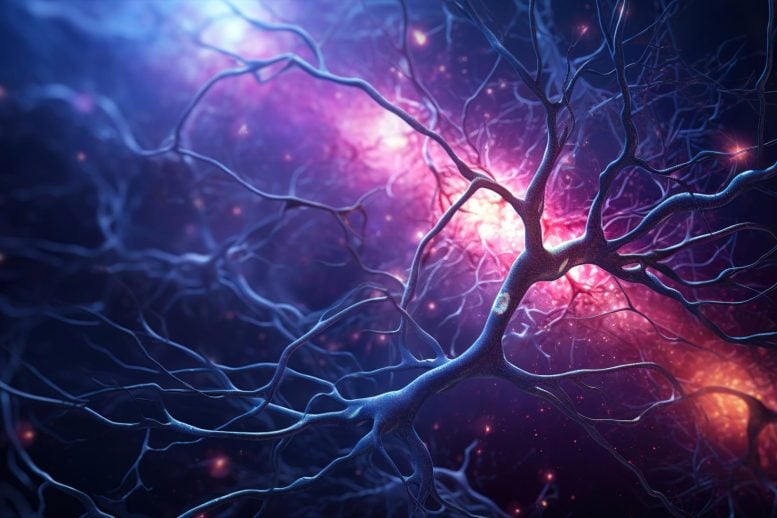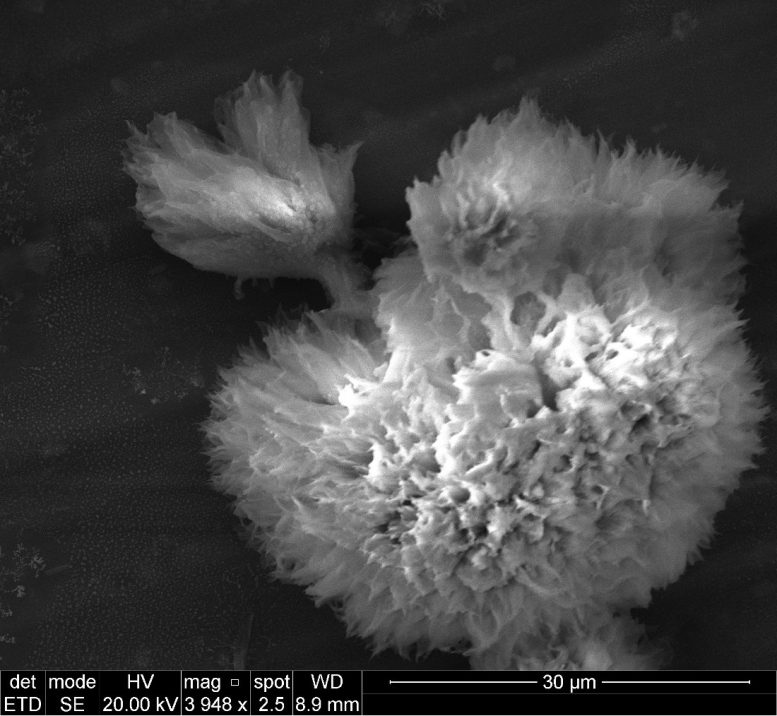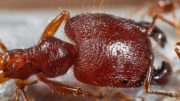
Researchers at the University of Copenhagen have developed a machine learning algorithm that allows for real-time tracking of protein clumps under the microscope, a breakthrough in studying neurodegenerative diseases like Alzheimer’s and Parkinson’s. The algorithm automates the mapping and tracking of these clumps, which was previously a time-consuming task, potentially accelerating the development of new therapies for these conditions. Credit: SciTechDaily.com
Protein aggregation underlies many neurodegenerative diseases affecting the brain, including Alzheimer’s and dementia. Scientists at the University of Copenhagen have created a new instrument to detect and analyze these small protein clusters. This breakthrough offers deeper insights into the body’s fundamental components and enhances the potential for improved treatments for conditions such as cancer, Alzheimer’s, and Parkinson’s.
Nearly 100,000 Danes aged 65 and older, along with over 55 million individuals globally, suffer from dementia-related conditions like Alzheimer’s and Parkinson’s disease. These disorders originate when tiny cellular components aggregate and impair crucial bodily functions. The reasons for these occurrences and their treatment continue to elude scientists. Until recently, exploring these diseases has been extremely difficult due to the lack of appropriate tools.
Now, researchers from the Hatzakis lab at the University of Copenhagen’s Department of Chemistry have invented a machine learning algorithm that can track clumping under the microscope in real time. The algorithm can automatically map and track the important characteristics of the clumped-up building blocks that cause Alzheimer’s and other neurodegenerative disorders. Until now, doing so has been impossible.
“In just minutes, our algorithm solves a challenge that would take researchers several weeks. That it will now be easier to study microscopic images of clumping proteins will hopefully contribute to our knowledge, and in the long term, lead to new therapies for neurodegenerative brain disorders,” says PhD Jacob Kæstel-Hansen from the Department of Chemistry, who, alongside Nikos Hatzakis, led the research team behind the algorithm.
The research has been published in the prestigious scientific journal Nature Communications.
Microscopic proteins detected in no time
The coming together and exchange of compounds and signals among proteins and other molecules occurs billions of times within our cells in natural processes that allow our bodies to function. But when errors occur, proteins can clump together in ways that interfere with their ability to work as intended. Among other things, this can lead to neurodegenerative disorders in the brain and cancer.
The researchers’ machine learning algorithm can spot protein clumps down to a billionth of a meter in microscopy images. At the same time, the algorithm can count and then group clumps according to their shapes and sizes, all while tracking their development over time. The appearance of clumps can have a major impact on their function and how they behave in the body, for better or worse.
“When studying clumps through a microscope, one quickly sees, for example, that some are rounder, while others have filamentous structures. And, their exact shape can vary depending on the disorder they trigger. But to sit and count them manually many thousands of times takes a very long time, which could be better spent on other things,” says Steen Bender from the Department of Chemistry, the article’s first author.
In the future, the algorithm will make it much easier to learn more about why clumps form so that we can develop new drugs and therapies to combat these disorders.
“The fundamental understanding of these clumps depends on us being able to see, track and quantify them, and describe what they look like over time. No other methods can currently do so automatically and as effectively,” he says.
Tools are freely available to everyone
The Department of Chemistry researchers are in now in full swing using the tool to conduct experiments with insulin molecules. As insulin molecules clump, their ability to regulate our blood sugar weakens.
“We see this undesirable clumping in insulin molecules as well. Our new tool can let us see how these clumps are affected by whatever compounds we add. In this way, the model can help us work towards understanding how to potentially stop or transform them into less dangerous or more stable clumps,” explains Jacob Kæstel-Hansen.
Thus, the researchers see great potential in being able to use the tool to develop new drugs once the microscopic building blocks have been clearly identified. The researchers hope that their work will kickstart the gathering of more comprehensive knowledge about the shapes and functions of proteins and molecules.
“As other researchers around the world begin to deploy the tool, it will help create a large library of molecule and protein structures related to various disorders and biology in general. This will allow us to better understand diseases and try to stop them,” concludes Nikos Hatzakis from the Department of Chemistry.
The algorithm is freely available on the internet as open source and can be used by scientific researchers and anyone else working to understand the clumping of proteins and other molecules.
Reference: “SEMORE: SEgmentation and MORphological fingErprinting by machine learning automates super-resolution data analysis” by Steen W. B. Bender, Marcus W. Dreisler, Min Zhang, Jacob Kæstel-Hansen and Nikos S. Hatzakis, 26 February 2024, Nature Communications.
DOI: 10.1038/s41467-024-46106-0
The research was conducted by: Steen W.B. Bender, Marcus W. Dreisler, Min Zhang, Jacob Kæstel-Hansen and Nikos S. Hatzakis from the Department of Chemistry with support from the Novo Nordisk Foundation Center for Optimised Oligo Escape and Control of Disease.










Be the first to comment on "Dementia Breakthrough: New AI Solves in Minutes a Challenge That Would Take Neuroscientists Weeks"